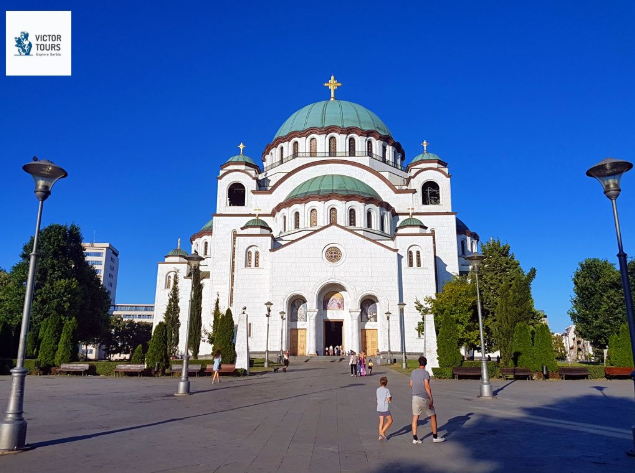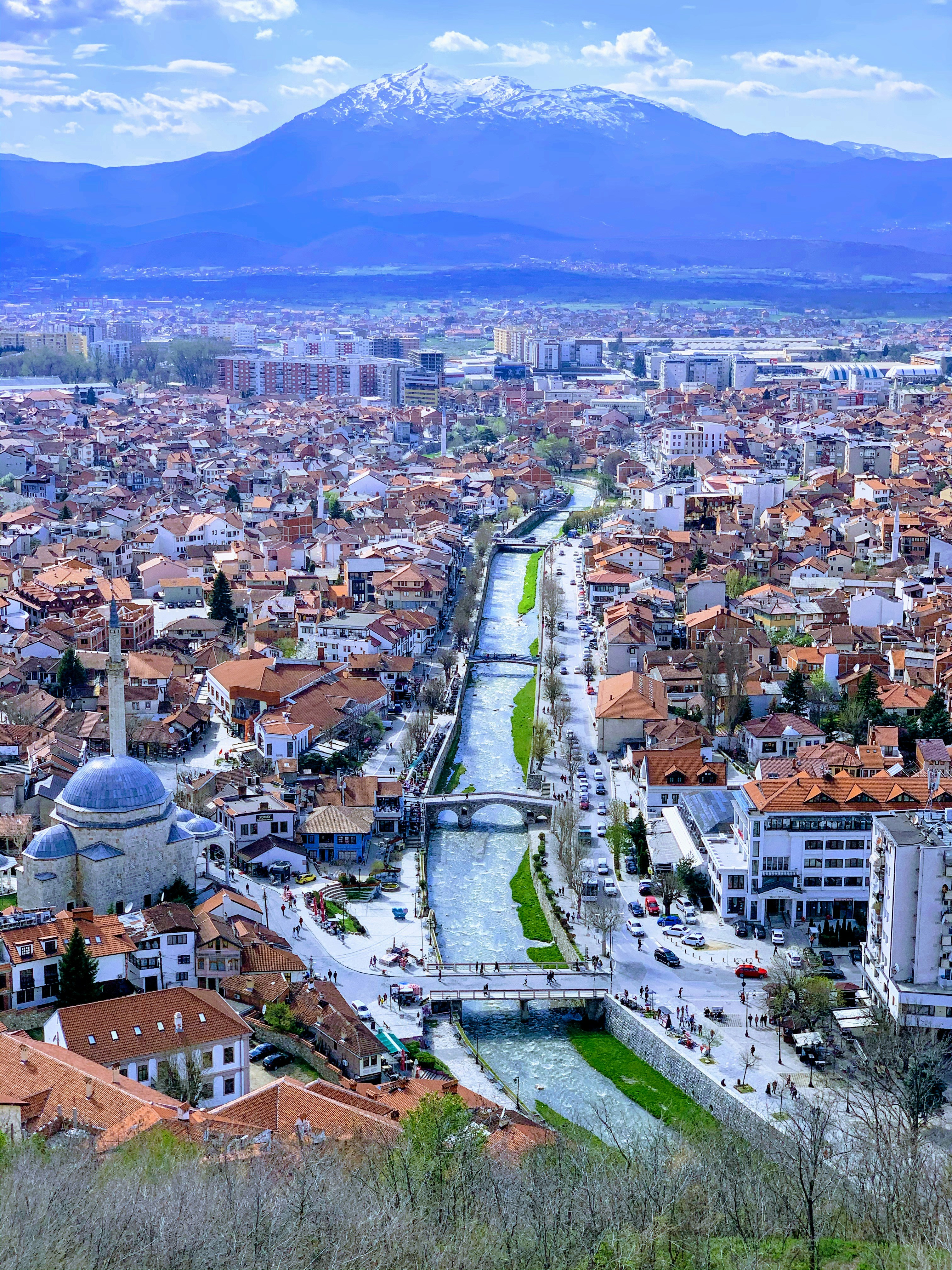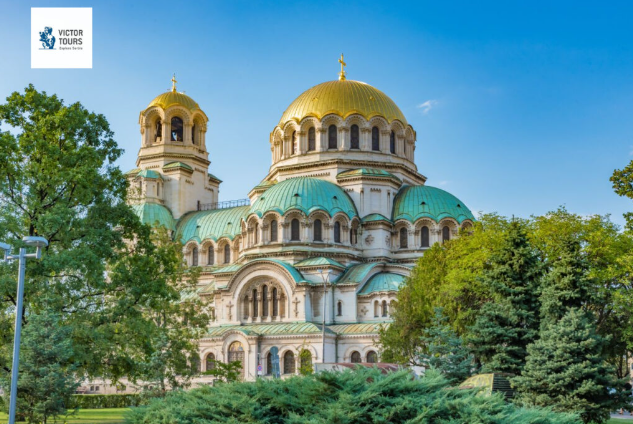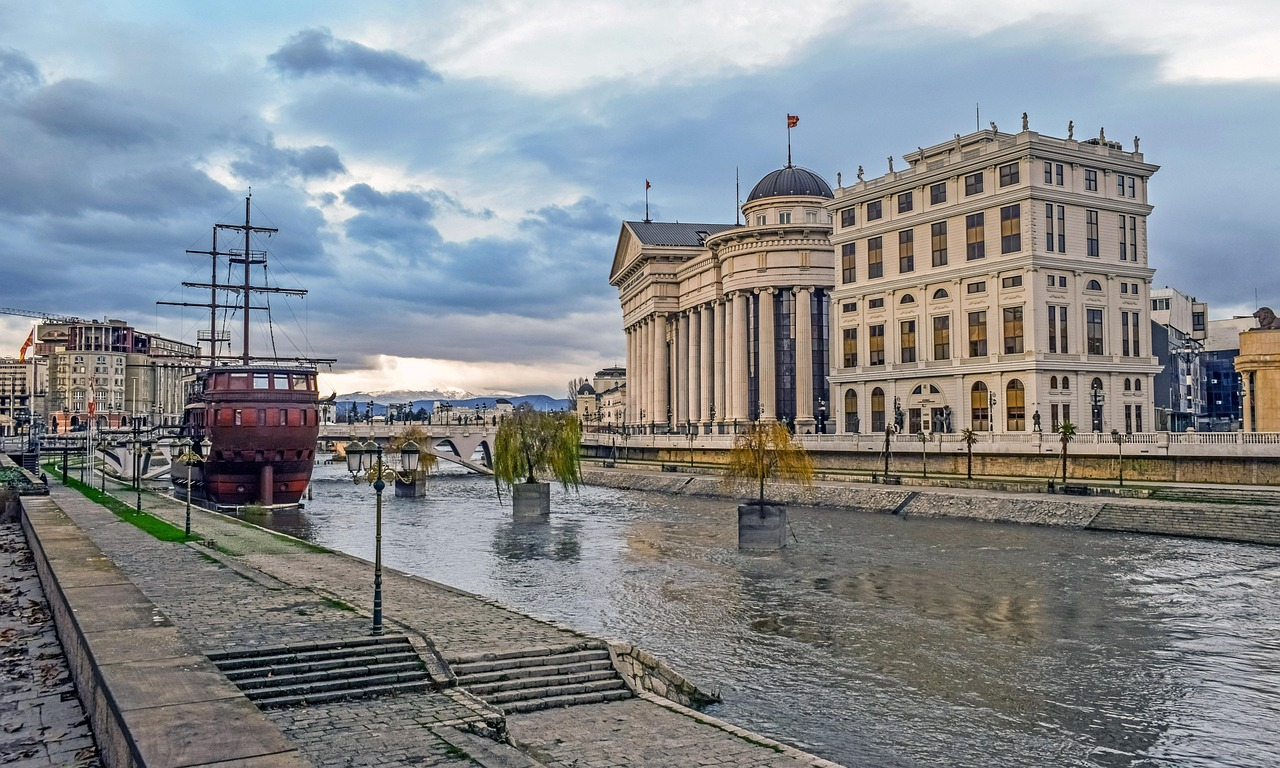7 days
Specific Tour
22 people
English, Russian
Sacred Balkans: A Journey Through Orthodox Shrines of Serbia, Bulgaria, and North Macedonia.
Embark on a 7-day spiritual and cultural journey through the heart of the Balkans, exploring the rich Orthodox heritage of Serbia, Bulgaria, and North Macedonia. Discover centuries-old churches, stunning monasteries, and vibrant cities that hold deep historical and religious significance.

Day 1: Arrive in Belgrade, the dynamic Serbian capital. Upon arrival at Nikola Tesla Airport in Belgrade, you will be warmly greeted by our representative at the airport. They will be holding a sign with your name for easy identification. After a brief introduction, you'll be assisted with your luggage and guided to your pre-arranged transportation. We're committed to making your arrival smooth and hassle-free, so you can start enjoying your trip from the moment you land! The driver’s details will be provided one or two days before your arrival via e-mail or WhatsApp message. Having the WhatsApp application is highly recommended for quick and smooth communication during the tour. You'll receive updates and details about the next day's trip one day in advance. Once you’ve checked in and had a chance to refresh, there will be a short meeting at your hotel. The timing will depend on your arrival, but it's typically scheduled for the evening before your first excursion. A representative from our agency will lead the meeting, ensuring you receive important information and updates about your tour. Our representative will provide you with a welcome pack containing essential information about your stay, including local tips and emergency contacts.

Day 2: Explore Belgrade’s Orthodox landmarks, including the magnificent St. Sava Temple and St. Mark’s Church. Our first stop is Kalemegdan, the oldest and largest park in the city center, and the magnificent Belgrade Fortress. Starting from Leopold’s Gate, we will pass by the remains of the Roman castrum – Singidunum and the medieval walls built upon it – Zindan Gate, Despot’s Gate, Jakšića Tower, all dating back to the 15th century. We will visit two Orthodox churches in this part of the fortress: The Chapel of St Petka and Ružica Church (Virgin Mary Church). Entering the Upper town (Gornji grad), we will see the magnificent sight of two rivers’ confluence: the Sava and the Danube. One of Belgrade’s most prominent landmarks – The Church of St. Sava (also known as St. Sava Temple), one of the largest Orthodox churches in the world. The Temple of St Sava has an enormous dome that you can see from all over the city. Size apart, the church is undeniably a highly impressive structure. Construction began in the 1930s at the site where the occupying Ottoman forces burned the relics of St. Sava (1175-1236). St Sava was the founder and the first archbishop of the independent Serbian Orthodox Church, and Serbians widely recognize him as one of the most important figures in Serbian history. Built in the Serbian-Byzantine style, the church occupies an area of 3500 m² at floor level, with an additional 1500 m² in the three galleries on the first level. At its highest point, the dome is 70 m in height, while the central gilded cross is an additional 12 m high, giving the Cathedral a total height of 82 m. Overnight in Belgrade.

Day 3: Visit the monastic gems of Fruska Gora, including Sremski Karlovci, a historic spiritual center. Fruška Gora, or “The Serbian Holly Mountain,” as it is often referred to, is a home for 17 active Orthodox monasteries. The monasteries were founded during the period of wars and migrations caused by Turkish occupation. They became vital communities that ensured that Serbian identity and Orthodox religion would survive through difficult times. Founded in the early 16th century, Krušedol is probably the most important one. Despite the large-scale destruction on several occasions, some original paintings remain on the dome’s pillars, while frescoes and icons date back to the mid-1700s. The church contains the remains of many members of the Serbian noble Branković family, as well as King Milan Obrenović (died 1901). Sremski Karlovci was a religious and educational center of the Serbs for more than 250 years, which makes it one of the most critical places in Serbian history. First, we will visit the Chapel of Peace, where the peace treaty was signed. Then we’ll stroll through the streets of Karlovci down to the main square. Here we will see the Four Lions Fountain, The Karlovci Gymnasium (High School), the Town Hall, the Roman Catholic Church, the Serbian Orthodox Church of St. Nicholas, the Patriarchy, and the Serbian Orthodox Theological Seminary. In one of the oldest wine cellars in the city, we’ll taste the most famous product of the area: the Bermet wine. Overnight in Belgrade.

Day 4: Travel to Niš, Serbia’s southern gateway, before heading to Sofia, Bulgaria’s capital, for a city tour. Overnight in Sofia. Today, it’s time to leave Serbia behind us and proceed to neighbouring Bulgaria, but only after visiting the third-largest city in Serbia and the birthplace of the famous Roman Emperor Constantine the Great, the city of Niš. First, we will visit the Niš Fortress, lying on the bank of the Nišava River. It assumed its final shape in 1723, when the Turks built it, facing the end of their reign in this area. We will continue our sightseeing of the most important sights in the city, including the Banovina Building, Niš Liberators Monument at King Milan Square, The Monument of well-known Serbian writer Stevan Sremac, Mediana Archeological Site, and the infamous Skull Tower. We will conclude our sightseeing with a visit to Red Cross Nazi Concentration Camp, today a museum. The German Gestapo operated the camp and held captured Jews, Serbians, and Romas during the Second World War. We’ll enjoy some of the food that Niš is famous for before we continue our trip to Sofia. After around 2 hours, we will arrive in Sofia. Quick check-in at your hotel, and that’s it for the day. Use this afternoon to walk around Sofia independently or go for dinner following your guide’s recommendation.

Day 5: Explore Boyana Church, a UNESCO-listed medieval masterpiece, and the iconic Rila Monastery, then cross into Skopje, North Macedonia. Breakfast and check out. After that, we will start with our Sofia walking tour. Bulgaria’s capital and largest city is built on the ruins of the Roman settlement known as Serdica. During our 90-minute walking tour, we will check the city’s most important sights and must-see places, such as the St. Alexander Nevski Cathedral, the National Theatre, St. George Rotunda, the Bulgarian Presidency, St. Sofia Monument, the Ruins of Serdica, and many others. A quick coffee, and we’ll hit the road again. Two hours later, we will enter one more Balkan state – Northern Macedonia. This beautiful country represents a unique mix of cultural influences, including Turkish, Slavic, Albanian, and Mediterranean. We’ll quickly reach Skopje, the country’s capital. They say that you will either love this city, rarely in between. After the check-in and a short break for refreshing, we’ll start with our Skopje walking tour. During the 90-minute walking tour, we will walk around the city’s main squares and streets and cross the Stone Bridge over the Vardar River to reach Skopje Fortress and Čaršija (Ottoman Old Town). Surely, we will not miss the gigantic Macedonia Square and the birthplace of Mother Theresa. Overnight in Skopje.

Day 6: Take a day trip to Kosovo, visiting its rich Orthodox sites. After breakfast, we’ll head for Kosovo. We’ll spend a full day exploring the natural and cultural beauties of the area. Before we reach Pristina, we’ll stop at the marvelous medieval UNESCO-protected Gračanica monastery, completed in 1321 by the Serbian king Milutin. The monastery, which is set on large, grassy grounds, is one of the most attractive in Kosovo. Here, you will hear the story about the history of the monastery and the area, about Orthodox Christianity, and you’ll get a chance to admire the breathtaking interior, with extraordinary frescoes covering the walls up to the top of the highest tower. After this serene experience, we will continue to Pristina, only 20 minutes away. We’ll immediately start with the sightseeing. We’ll check the sights such as the National University Library of Kosovo, open-air archeological park, Carshi Mosque, Sultan Mehmet Fatih Mosque, Great Hammam, etc. You’ll have some free time to explore the city on your own or perhaps grab a bite before we proceed to Prizren. Set on the slopes of Šar mountain and by the banks of the Bistrica River, Prizren is widely regarded as the most beautiful city in Kosovo. Its rich cultural heritage represents a blend of different cultural influences, including Turkish, Serbian, and Albanian. Here, you will see the Sinan Pasha Mosque, Prizren Fortress, and Prizren Old Town, with various souvenir shops, restaurants, and cafes. After some free time, we’ll head back to Skopje, where we will arrive in the evening.Overnight in Skopje.

Day 7: Free time for exploration Skopje before departure. Transfer to the airport. Have a safe flight!